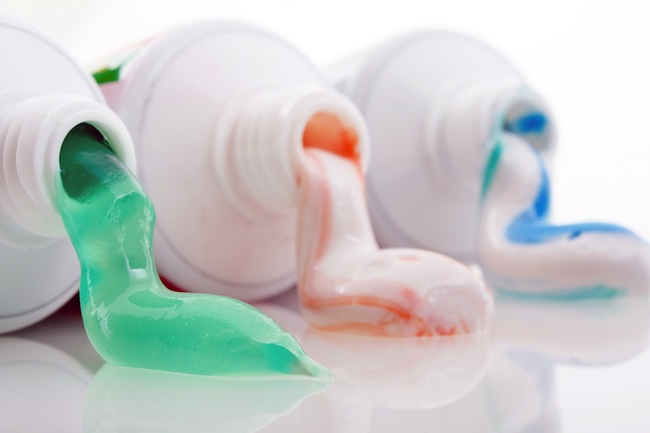- Make It Yourself Lavender Heart-Shaped Bath Bombs!
- 20 Things You Never Knew About “Down There”
- 12 Best Foods For Those Suffering From Arthritis Pain
- 12 Personal Hygiene Mistakes Almost Everyone Makes (Mom Never Told You About #4!)
- 15 Medicinal Plants And Herbs From The Cherokee People
- 12 Mind-Blowing Benefits Of Drinking Coconut Water During Pregnancy
- 12 Outstanding Winter Foods That Won’t Fatten You Up Like A Christmas Turkey
10 Tips To Stop Consuming Fluoride, Even If It’s Not In Your Water

Photo credit: bigstock.com
If you think you are safe because there is either no fluoride being added to your municipal water, or because you have a water filtration system that removes it, think again.
There are plenty of other ways that fluoride is hiding in plain sight, so to speak, and you probably don’t know it. Some sources of fluoride are obvious, such as toothpaste, but others, not so much.
We have made a list of 10 ways that you and your family can avoid this dangerous neurotoxin. Keep reading and be aware of how you might be consuming this dangerous chemical without even knowing it!
1. Stop Drinking from Unidentified Water Sources
If you go to your friend’s house and you decide to get a glass of water from the sink, do you really know what’s in it? This is especially true if your friend lives in another county, or even in another city. Even if you know that your municipality does not fluoridate the water, do you know about your friend’s home? Your parent’s home? The gym? The drinking fountain at the zoo or the park? Never drink from unknown water sources unless it is a matter of life or death.
Continue to Page 2

Photo credit: bigstock.com
2. Fluoride Toothpaste
Although it is common knowledge that fluoride helps prevent cavities, the idea is to use it topically and to not ingest it. If you have very small children, keep your fluoridated toothpaste out of their reach. You might want to use non-fluoridated toothpaste on children who still have their “baby” teeth. They are going to lose those teeth anyway, so fluoride really isn’t a concern. After your children are 10 or 12 years of age, you can start giving them fluoridated toothpaste. Instruct them that they are to never swallow when they are brushing their teeth. Your 4-year-old might not always follow these instructions, but a 10-year-old is capable of understanding that fluoride is dangerous and they should never consume it.
3. Fluoride Gel Treatments
Do not allow your dentist to give your children those fluoridated gel treatments. These should be reserved for patients who are at the highest risk of developing cavities – generally, those who have other kinds of health problems. Almost all people who end up getting these intense fluoride treatments will swallow quite a bit of it. It is impossible not to. This puts you (and your children) at risk for kidney damage, damage to the reproductive system, and impaired cognitive function. Just say no.
4. Eat Less Processed Food
Even if you live in an area where they do not fluoridate water, you have no idea if the water given to food crops is fluoridated or if the food was processed using fluoridated water. As a general rule, the more processed a food is, the greater the risk that it will contain fluoride as a by-product of the water that was using in making the food. Eat more natural foods from Mother Nature and always opt for the organic route as much as possible. Making food from scratch ensures that your family is getting plenty of nutrition and little or no unwanted chemicals such as fluoride.
Continue to Page 3

Photo credit: bigstock.com
5. Buy Organic Grape Juice (and Wine!)
Unfortunately, many of the vineyards in the US use a pesticide that contains fluoride, called cryolite. This means that most grape juice and wine (especially white wine and white grape juice) contain high levels of fluoride. The USDA reported back in 2005 that most white wines and white grape juice tested at more than 2 PPM for fluoride contamination. If you find organic varieties too expensive, choose wines and grapes from Europe.
6. Watch Out for Black and Green Tea
Although both black and green teas are healthy, they can contain fluoride. Younger tea leaves contain far lower levels of fluoride. Avoid all bottled, canned, or instant teas, as these have the highest levels of fluoride. Drink white tea and green tea from Japan to get the health benefits these teas have to offer without the dangers of fluoride.
7. Avoid Non-Stick Cookware
Although many people are aware that non-stick (Teflon) cookware is known to cause many health problems if it becomes overheated, very few people know that non-stick cookware can significantly increase the fluoride content of your food, even if the pan is not overheated. Use copper, stainless steel, or iron cookware.
Continue to Page 4

Photo credit: bigstock.com
8. Avoid Drugs Containing Fluoride
Most people do not know that their pharmaceutical drugs might contain fluoride. Some of the drugs that are known to contain fluoride are Cipro, Voriconazole, Flecainide, Isoflurane, and Sevoflurane. If are taking any of these drugs, speak with your doctor about a safer, fluoride-free alternative.
9. Limit the Consumption of Mechanically Deboned Chicken
Chicken products that are referred to as being “flaked and formed” or “flaked and reformed,” such as chicken fingers or chicken nuggets, are made with a mechanical device that removes meat from the bone. This process exposes the meat to the fluoride in the bone, as the bones are usually crushed in the process. Avoid these types of processed chicken products and eat whole chicken pieces with the bone intact.
READ ALSO: Just When You Thought You Knew Everything About Fluoride
10. Avoid Fluoridated Salt
Most people are aware that many table salts contain iodine, but aren’t aware that their salt can also contain fluoride. Always read the label and see if the brand of salt you buy contains fluoride. You can avoid fluoridated salt by purchasing pure and healthy Himalayan salt.
References:

































